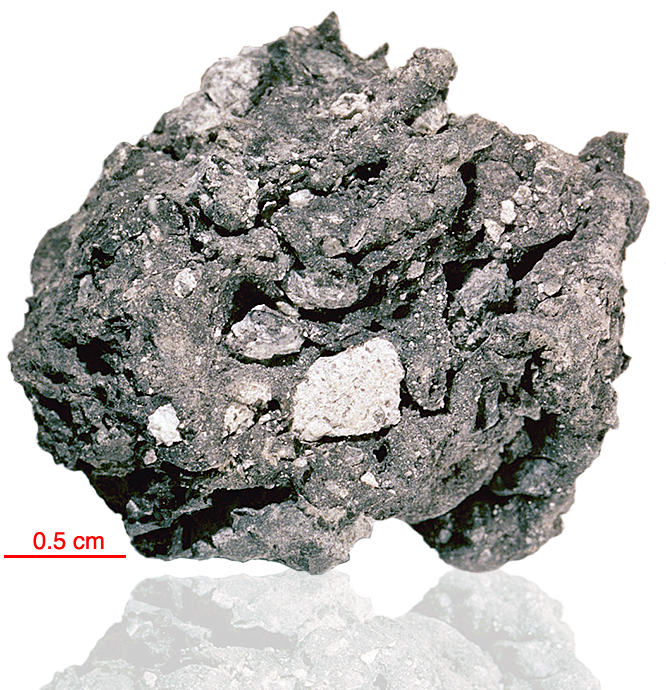
Fact sheet
Sample 67628 was renumbered in 1980. It is a collection of four “glass bombs” that were collected as rake samples and 67687 is the largest "bomb". 67687 consists of lithic fragments - both mineral and rock. Rotation 1 shows the largest mineral fragments and rotation 2 a lithic rock fragment. Subspherical fragments of metallic iron are visible in reflected light.
The sample weighed 7.6 grams before analysis and has not been dated.
Further details of this and other Apollo samples are here: http://curator.jsc.nasa.gov/lunar/
The Apollo 16 landing site was in the hilly region around Descartes crater in the lunar highlands. The landing spot was chosen to allow the astronauts to gather geologically older lunar material (Descartes Formation and the Cayley Formation) than the samples obtained in the first four landings, which were in or near lunar maria.
The mission lasted 11.1 days, with a stay on the lunar surface of 71 hours. The crew were on the lunar surface for 20.2 hours during which they traversed approximately 27 kilometers and collected approximately 96 kilograms of samples.
Apollo 16 was launched on 16 April 1972.






